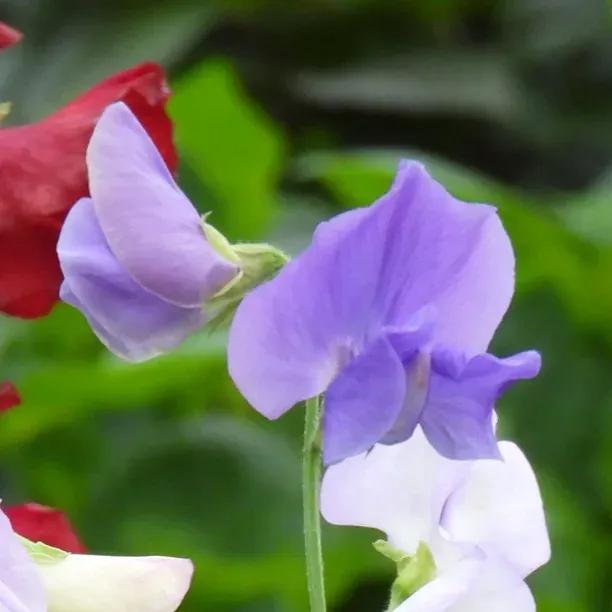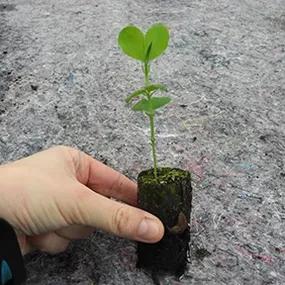Heathcliff Sweet Pea Plants & Seeds
The details
- Colour: deep blue-purple
- Stem: long
- Height: 1.8m
- Type: Grandiflora
- Scent: hugely scented
- Flowering: June-September
- Planting Months: March-June
- RHS Award of Garden Merit
Recommended extras
Description
Heathcliff Sweet Pea Plants & Seeds
Swarthy, brooding, mysterious and, yes, just a little bit dramatic, Heathcliff is a sweet pea you'll be tempted to grow in your borders. That deep royal purple-blue is a colour that works in every style of garden, while the long, strong stems make Heathcliff ideal for cutting and bringing indoors. The scent is powerful, almost overwhelming. Plus it has an Award of Garden Merit from the RHS, so like its namesake, it's sure to sweep you off your feet in its short life (without the part where it torments and destroys most of the people at Thrushcross Grange, we hope).
Our Sweet Peas are delivered in purpose-designed, recycled cardboard packaging, and are ready to be planted out when you get them.
We generally send them out between March and May, but we will email you with the likely delivery timescale once you have placed your order.
Features
- Colour: deep blue-purple
- Stem: long
- Height: 1.8m
- Type: Grandiflora
- Scent: hugely scented
- Flowering: June-September
- Planting Months: March-June
- RHS Award of Garden Merit
Growing Heathcliff Sweet Peas
In the garden, you are best following a few simple rules with sweet peas. Give them sun, so south or west facing, plant in really good, rich soil, train the new growth into supports such as canes or an arbour, and don't let them dry out. Once your sweet peas are flowering, give them a high-potash feed every week or two, and they'll flower their socks off from June until September, or even beyond - as long as you remove any seeds that form and keep on cutting the flowers to bring indoors for vases. They really are brilliant value, in terms of sheer joy, ease and the weeks of colour and scent they bring.
Planting Instructions
Plant Heathcliff Sweet Peas in well prepared, moist soil that ideally has been improved with organic matter. Erect supports for the peas to climb up before planting. They can also be planted in pots of sufficient size - allow 6 litres per plant - and with an ideal planting medium of 50% compost, 40% top soil and 10% well-rotted manure. General-purpose compost will do but produces fewer flowers.
The principal requirement is enough water and food - Sweet Peas are thirsty and hungry plants. They can cope with a little shade but flower better in full sun.
Space each plant about 30 cm apart and about 5 cm from its support. The hole should be deep enough to accommodate the longest root and the soil should come up to the level of the first side shoot. Use wire/netting/twine between the supports so that the Sweet Pea can climb naturally. You will still need to tie them into the frame. They grow fast, so check every ten days or so.
Water well; the soil around sweet peas should never dry out. As the flowers develop pick them and then pick again, otherwise they start to form seedpods and will stop flowering altogether. Keep tying in and picking for as long as you can. Perfectionists will remove the curling tendrils which grip other stems and can result in flowers with wiggly stems and also will remove side shoots. see the website for more advice on training sweetpeas.
, By all means, apply a high potash and phosphate fertiliser during the growing season. (Sweet Peas actually fix nitrogen from the air into the soil so you don't need more of that.) Home-made comfrey liquid is perfect or Tomorite will do especially if you are on a sandy soil.
Did you know?
Heathcliff, the iconically complex, destructive and ultimately pitiable character in Emily Bronte's Wuthering Heights has been played on stage and screen by, among others, Ralph Fiennes, Timothy Dalton, Laurence Olivier, Tom Hardy, and that famously rugged, intimidating actor, Cliff Richard.




